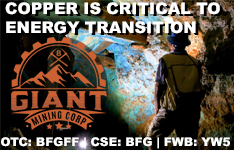The piece reported that the WikiLeaks' website had identified several metals mines and facilities so critical to U.S. interests that they'd been placed under the National Infrastructure Protection Plan at the request of the U.S. Department of Homeland Security. (For those who might not want to actually visit the WikiLeaks site, the relevant part of the released cable can be found on the Internet at, for example, Business Insider.)
As the final paragraph of the article blithely stated:
Critics, including several high-profile U.S. politicians, have said that the list could help terrorists identify soft targets and have called for Wikileaks [sic] founder Julian Assange's execution.A significant qualifier to the information WikiLeaks "revealed" about key metals resources is that it is, essentially, old hat. The importance of many of the metals and mines on the list were already public knowledge.
I have no desire to be lined up against a wall and shot, so I'll refrain from naming any of the so-called soft targets and instead focus on what DHS defines as "key resources," or metals and metal-bearing minerals that are "so vital to the U.S. the incapacitation or destruction of such systems and assets would have a debilitating impact on national security, economic security, public health/safety or any combination. . ."
Among these, what we would call the strategic metals/minerals, only the following were mentioned:
- Chromite
- Cobalt
- Germanium
- Manganese
- Niobium
- Rare Earths
- Titanium
- Tungsten

Not surprisingly, save for titanium and rare earths, each of the metals from the WikiLeaks list is included. Particularly interesting, though, are the two "strategic" metals that appear only in the NDS list—beryllium and tantalum—and which are conspicuously absent from the metals mentioned by WikiLeaks.









































